基于模型预测残差和目标函数的MPC实时性能监控
田学民,李秋美,尚林源(中国石油大学(华东)信息与控制工程学院,山东 青岛 266580)
基于模型预测残差和目标函数的MPC实时性能监控
田学民,李秋美,尚林源
(中国石油大学(华东)信息与控制工程学院,山东 青岛 266580)
摘要:模型预测控制的性能受多种因素的影响,现有的模型质量评价指标没有考虑外界干扰的变化,反映系统整体性能时不够全面。针对上述问题,现结合两个指标:基于模型预测控制目标函数的历史性能指标和基于模型预测残差的协方差指标对系统性能进行实时监控。其中,历史性能指标用以评价系统的整体性能,协方差指标反映模型失配和干扰变化的影响。根据两个指标对不同性能影响因素的不同表现和性能恶化后对干扰新息的重新辨识结果,对系统性能下降的原因进行初步诊断,缩小性能下降源的范围,并通过Wood-berry塔实验验证了该方法的有效性。
关键词:模型预测控制;历史性能指标;模型预测残差;协方差指标;实时监控;实验验证
2015-12-01收到初稿,2015-12-10收到修改稿。
联系人及第一作者:田学民(1955—),男,教授。
引 言
由于模型预测控制能直接处理含时滞、带约束、强耦合的多变量过程[1],在工业中得到广泛应用。然而,在MPC投运一段时间后,其性能因各种因素的影响会逐渐恶化,导致产品质量下降,使企业蒙受损失。因此,对MPC性能监控及诊断的研究具有重要意义。
现有的MPC性能监控方法大致可分为两类:基于模型的方法和基于数据驱动的方法。前者如最小方差控制(minimum variance control,MVC)[2],以及MVC基础上的广义最小方差(generalized minimum variance,GMV)基准[3-4]、线性二次高斯(linear quadratic gaussian,LQG)基准[5-6]和一些用户自定义基准[7-8]。这类方法相对成熟,但监控结果依赖过程模型的精度。数据驱动的方法如基于多变量的协方差方法[9-10]、多元统计分析方法[11-12]等。这类方法通过数据处理提取有效信息,不依赖模型,通用性强。性能诊断方面,大多采用模式识别[13-15]的方法匹配相应的性能恶化模式。鉴于模型失配是导致MPC性能下降的一个关键因素,Sun等[16-17]有针对性地提出模型质量评价指标。该方法可以有效检测模型是否匹配,但没有考虑实际中外界干扰变化的影响,不能全面地反映系统整体性能。
针对该问题,本文结合基于MPC目标函数的历史性能指标和基于模型预测残差的协方差指标对系统性能进行实时监控。当系统性能下降时,结合两个指标的不同表现及干扰的重新辨识结果,对导致系统性能下降的原因做出初步诊断,并通过在Wood-berry塔上的仿真实验验证该方法的有效性。
1 基于常规闭环数据的干扰新息估计


图1 内模控制结构图Fig.1 Chart of internal model control


其中,ai、bi为系数,结合式(3)和式(4)可得

对足够大的m和n,式(5)是稳定的高阶ARX模型。e0(k )可由闭环数据通过式(5)估计得到。

输出的一步预测值以及模型预测残差分别为[18]


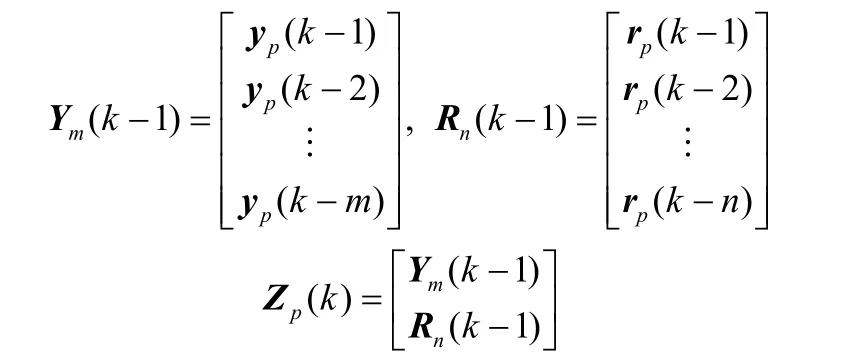
其中,p为数据长度,进而。以式(5)估计干扰新息e0(k )的过程如下,首先定义



由于e0(k )与过去的输入输出无关,当p→∞时,有。所以系统的闭环数据间往往高度相关,式(11)中可能是病态的,导致估计结果不可靠。因此,e0(k )可以通过QR分解获得


2 性能指标
2.1 基于MPC目标函数的历史性能指标
线性MPC通常通过最小化下面的二次目标函数计算其控制作用

式(14)反映系统跟踪设定值能力和控制作用变化幅度,体现系统整体性能。受外界干扰的影响,J( k )是一个随机量,作为基准时取期望值。
因此,定义如下性能评价指标

其中,Jhis和Jact( k )分别是由正常历史数据计算的基准值和系统运行中的实时值。η1越接近1,表明系统性能越好;越接近0,系统性能越差。
2.2 基于模型预测残差的协方差指标
在性能监控领域,过程输出方差是很重要的参数。Harris等[19]最早提出如下性能指标

其中,Qy为输出权矩阵,cov(yMV)和cov(y )分别为MVC控制和实际控制的协方差矩阵。
该指标只考虑了协方差的对角线元素,忽略了变量间的相关性。对此,Qin等[9]选取性能良好的数据段Ⅰ作为基准,与实时监控数据段Ⅱ作比,定义行列式形式指标

实际中,模型失配、干扰变化等都会引起模型预测残差变化。鉴于以上分析,定义指标

3 性能监控与诊断
Sun等[16]证明,外界干扰不变时,可由系统发生模型失配时的模型预测残差序列e辨识得到。与第1节辨识过程本质一致,说明模型失配不影响干扰新息的辨识结果。基于此,可以进行系统性能的初步诊断。
判断外界干扰是否发生变化采用指标

其中,η2h分母中表示由性能下降后的闭环数据辨识得到的干扰新息序列。若η2h在1附近,说明外界干扰不变,若偏离1,则外界干扰发生变化。
综上,性能监控及诊断流程如图2所示。
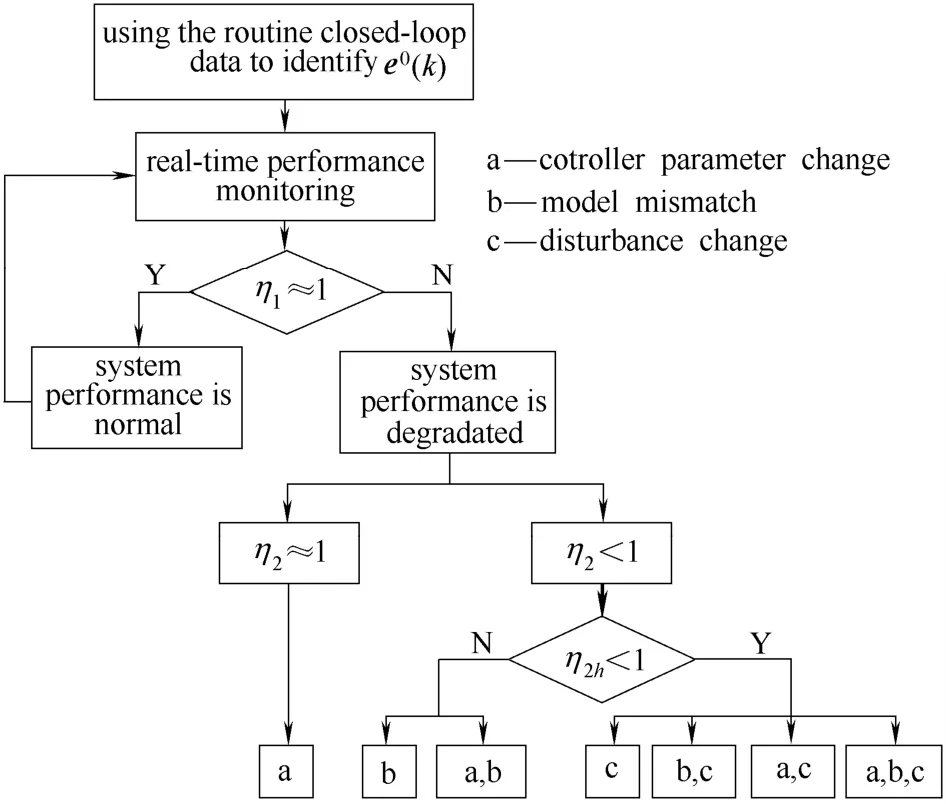
图2 性能监控与诊断流程图Fig.2 Flow chart of performance monitoring and diagnosis
4 仿真实验
4.1 模型介绍
在Wood-berry二元精馏塔上进行仿真实验,输出为塔顶馏出物浓度XD和塔底液相浓度XB,由塔顶回流量R和塔底再沸蒸汽量S控制。采样时间1min,过程模型离散化后为

干扰模型取IMA模型[20],对角型


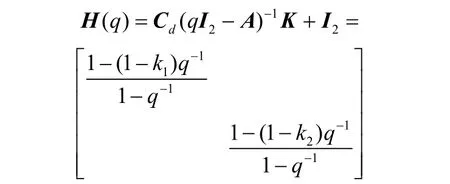
4.2 仿真结果
4.2.1 干扰新息基准 正常情况下,利用第1节方法估计干扰新息序列(干扰源已知),计算

表1 干扰源及其辨识结果比较Table 1 Comparison between disturbance source and its re-identified result
由表1可知,正常情况下,e0、e与近似相同。由此,可由正常情况下估计的为基准,结合式(15)和式(18)进行性能监控。
4.2.2 性能监控与诊断 正常情况下,指标1η和2η均在1附近上下波动。在t =4000时刻,控制器参数发生表2变化。此时,两指标在表3所列值附近波动。
由于1η是一个综合指标,控制器参数变化时,1η会随之发生变化。而2η仍在1附近波动,说明2η不随控制器参数的变化而变化。
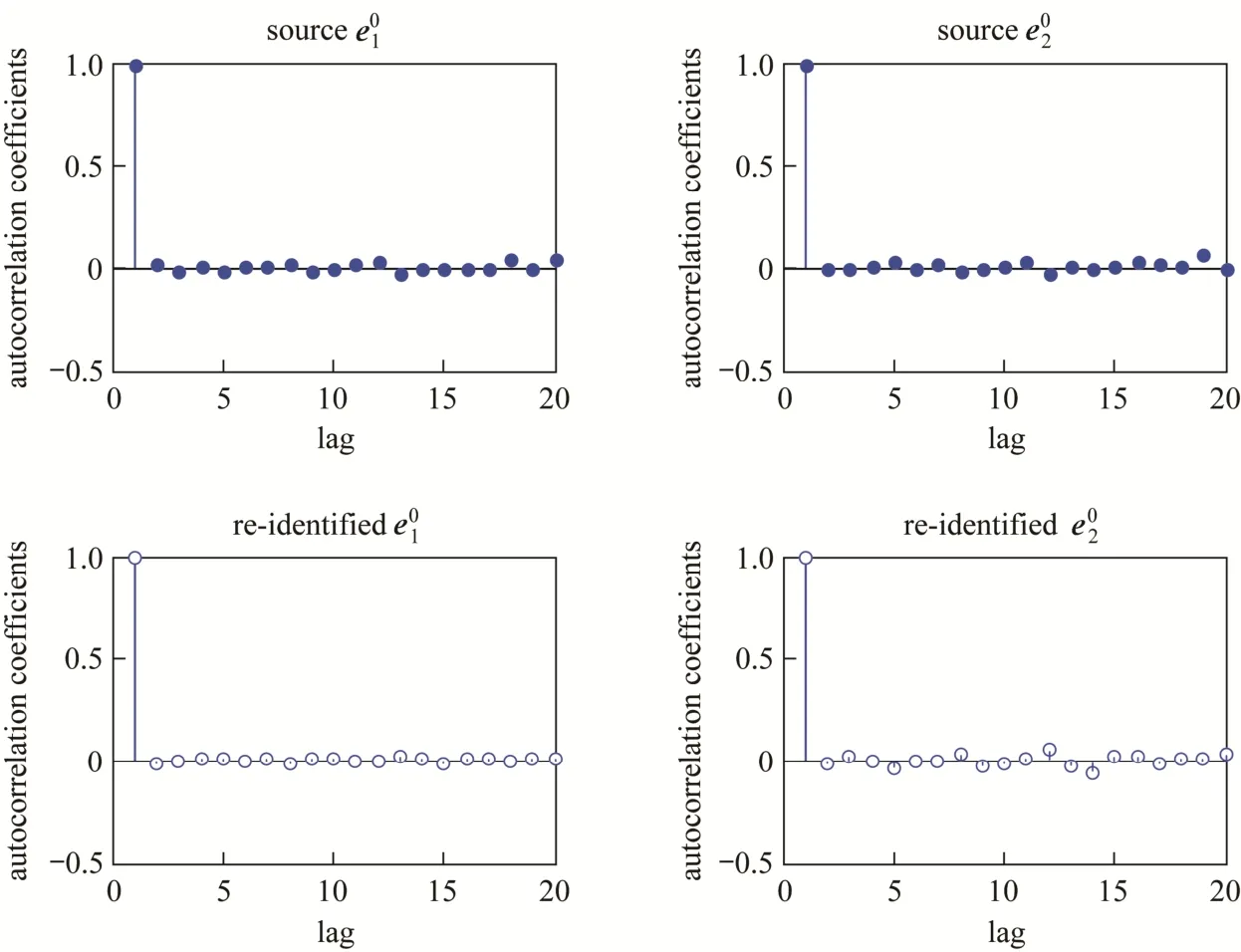
图3 干扰源及其辨识结果自相关系数Fig.3 Autocorrelation coefficients of disturbance source and its re-identified result
t= 4000时刻,设置以下3类性能下降:过程模型失配、干扰模型变化和干扰方差变化,分别用S,K,D表示,具体见表4。
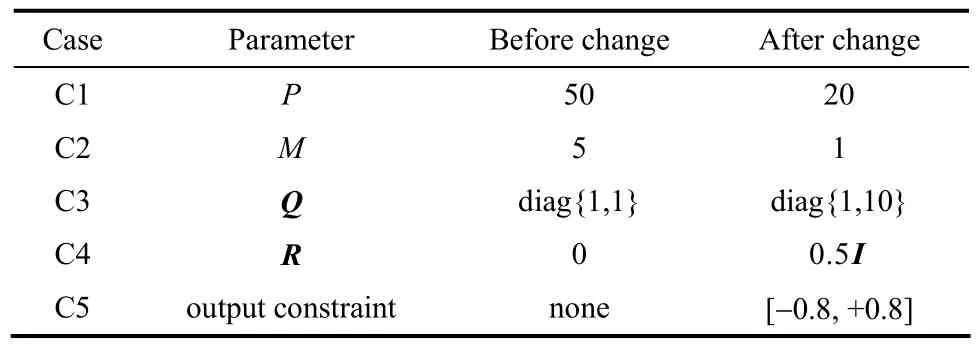
表2 控制器参数变化Table 2 Change of controller parameters

表3 控制器参数变化时指标值Table 3 Value of indices when controller parameters change

表4 恶化性能类别及参数设置Table 4 Classes and parameters of performance deterioration
在上述情况下,系统性能监控如图4所示。
由图4可知,1η和2η均检测出系统性能下降。由图2可知,利用闭环数据重新辨识干扰新息,计算指标η2h,结果见表5。

表5 干扰重新辨识结果Table 5 Re-identified result of disturbance
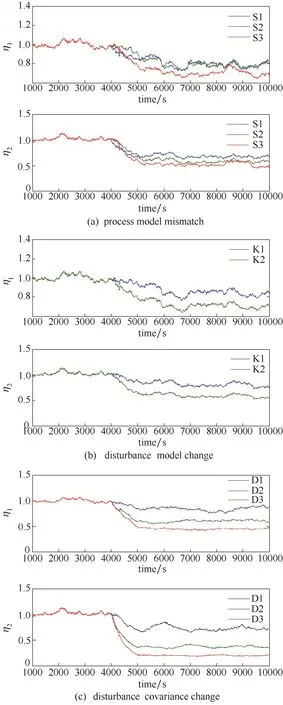
图4 系统性能恶化时监控图Fig.4 Performance monitoring of bad situation
根据指标η2h,过程模型失配和干扰通道变化时,相比几乎没有变化,即外界干扰不变。由图2可判断,系统发生模型失配,另外,还可能有控制器参数的变化。
干扰方差发生变化时,η2h明显小于1,表明外界干扰发生变化。另外,导致性能下降的原因可能还有:①模型失配;②控制器参数变化;③模型失配和控制器参数同时变化引起。
5 结 论
针对模型质量评价指标不能全面反映系统性能的问题,本文结合了可以评价系统整体性能的目标函数指标和能够反映模型失配及干扰变化的模型预测残差指标进行实时性能监控。在Wood-berry塔上的仿真结果表明,该方法能够有效检测出系统性能的下降。根据两个指标对不同性能影响因素的不同表现及干扰的重新辨识结果可以缩小系统性能下降源的范围。
References
[1] 席裕庚, 李德伟, 林姝. 模型预测控制——现状与挑战 [J]. 自动化学报, 2013, 39 (3): 222-236.
XI Y G, LI D W, LIN S. Model predictive control—status and challenges [J]. Acta Automatica Sinica, 2013, 39 (3): 222-236.
[2] HARRIS T J. Assessment of closed-loop performance [J]. The Canadian Journal of Chemical Engineering, 1989, 67 (10): 856-861.
[3] GRIMBLE M J. Controller performance benchmarking and tuning using generalized minimum variance control [J]. Automatica, 2002, 38 (12): 2111-2119.
[4] ZHAO Y, SU H Y, CHU J, et al. Multivariable control performance assessment based on generalized minimum variance benchmark [J]. Chinese Journal of Chemical Engineering, 2010, 18 (1): 86-94.
[5] KADALI R, HUANG B. Controller performance analysis with LQG benchmark obtained under closed loop conditions [J]. ISA transactions, 2002, 41 (4): 521-537.
[6] POUR N D, HUANG B, SHAH S L. Consistency of noise covariance estimation in joint input-output closed-loop subspace identification with application in LQG benchmarking [J]. Journal of Process Control, 2009, 19 (10): 1649-1657.
[7] YUAN Q L, LENNOX B, MCEWAN M. Analysis of multivariable control performance assessment techniques [J]. Journal of Process Control, 2009, 19 (5): 751-760.
[8] LIU C Y, HUANG B, WANG Q L. Control performance assessment subject to multi-objective user-specified performance characteristics [J]. IEEE Transactions on Control Systems Technology, 2011, 19 (3): 682-691.
[9] YU J, QIN S J. Statistical MIMO controller performance monitoring(Ⅰ): Data-driven covariance benchmark [J]. Journal of Process Control, 2008, 18 (3/4): 277-296.
[10] YU J, QIN S J. Statistical MIMO controller performance monitoring(Ⅱ): Performance diagnosis [J]. Journal of Process Control, 2008, 18 (3/4): 297-319.
[11] ALGHAZZAWI A, LENNOX B. Model predictive control monitoring using multivariate statistics [J]. Journal of Process Control, 2009, 19 (2): 314-327.
[12] 陈贵,杨江,谢磊,等. 基于子空间方法的模型失配检测研究 [J]. 化工学报, 2011, 62 (9): 2575-2581.
CHEN G, YANG J, XIE L, et al. Research on model-plant mismatch detection based on subspace approach [J]. CIESC Journal, 2011, 62 (9): 2575-2581.
[13] 尚林源,田学民. 基于加权L2-Hausdorff子空间距离的MPC控制回路性能诊断 [J]. 化工学报, 2014, 65 (11): 4477-4483.
SHANG L Y, TIAN X M. Performance diagnosis of MPC control loop based on weighted L2-Hausdorff subspace distance [J]. CIESC Journal, 2014, 65 (11): 4477-4483.
[14] HUANG B. Bayesian methods for control loop monitoring and diagnosis [J]. Journal of Process Control, 2008, 18 (9): 829-838.
[15] TIAN X M, CHEN G Q, CHEN S. A data-based approach for multivariate model predictive control performance monitoring [J]. Neurocomputing, 2011, 74 (4): 588-597.
[16] SUN Z J, QIN S J, SINGHAL A, et al. Control performance monitoring via model residual assessment [C]//American Control Conference (ACC). IEEE, 2012: 2800-2805.
[17] SUN Z J, QIN S J, SINGHAL A, et al. Performance monitoring of model-predictive controllers via model residual assessment [J]. Journal of Process Control, 2013, 23 (4): 473-482.
[18] LJUNG L. System Identification [M]. Birkhäuser Boston, 1998.
[19] HARRIS T J, BOUDREAU F, MACGREGOR J F. Performance assessment of multivariable feedback controllers [J]. Automatica, 1996, 32 (11): 1505-1518.
[20] ZAGROBELNY M A. MPC performance monitoring and disturbance model identification [D]. Madison, Wisconsin: University of Wisconsin-Madison, 2014.
研究论文
Received date: 2015-12-01.
Foundation item: supported by the National Natural Science Foundation of China (61273160,61403418) and the Fundamental Research Funds for the Central Universities(15CX06063A).
Real-time performance monitoring of MPC based on model predictive residuals and objective function
TIAN Xuemin, LI Qiumei, SHANG Linyuan
(College of Information and Control Engineering, China University of Petroleum (East China), Qingdao 266580, Shandong, China)
Abstract:The performance of model-predictive control (MPC) is affected by many factors. Considering that current model quality index does not take the influence of disturbance into consideration, two indices are applied to realize real-time monitoring of system performance: historical performance index based on MPC objective function and covariance index based on model predictive residuals. The former monitors the whole performance and the latter reflects the influence of the model mismatch and the disturbance. They respond differently to different factors. Combining the re-identified result of the disturbance innovations, we can get preliminary diagnosis why the system performance decreases and narrow the scope of the source of performance degradation. Finally, the experimental validation on Wood-berry column demonstrates the effectiveness of this method.
Key words:model-predictive control; historical performance index; model predictive residuals; covariance index; real-time monitoring; experimental validation
DOI:10.11949/j.issn.0438-1157.20151804
中图分类号:TP 277
文献标志码:A
文章编号:0438—1157(2016)01—0846—06
基金项目:国家自然科学基金项目(61273160,61403418);中央高校基本科研业务费专项资金 (15CX06063A)。
Corresponding author:Prof. TIAN Xuemin, tianxm@upc.edu.cn

